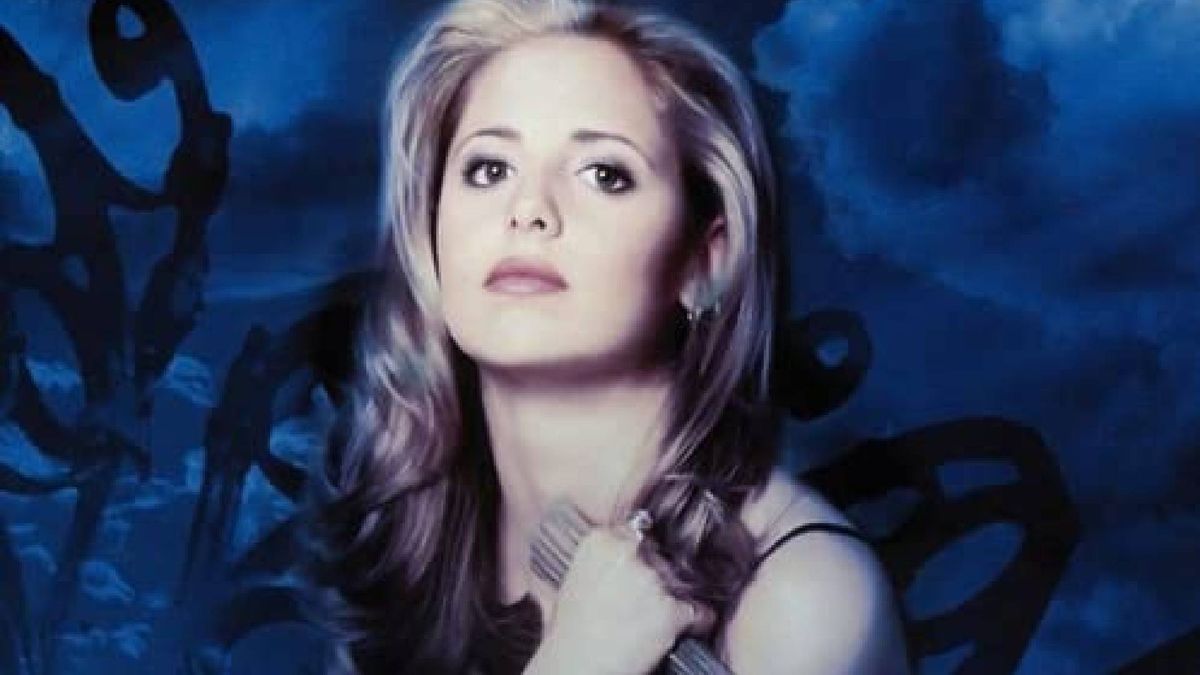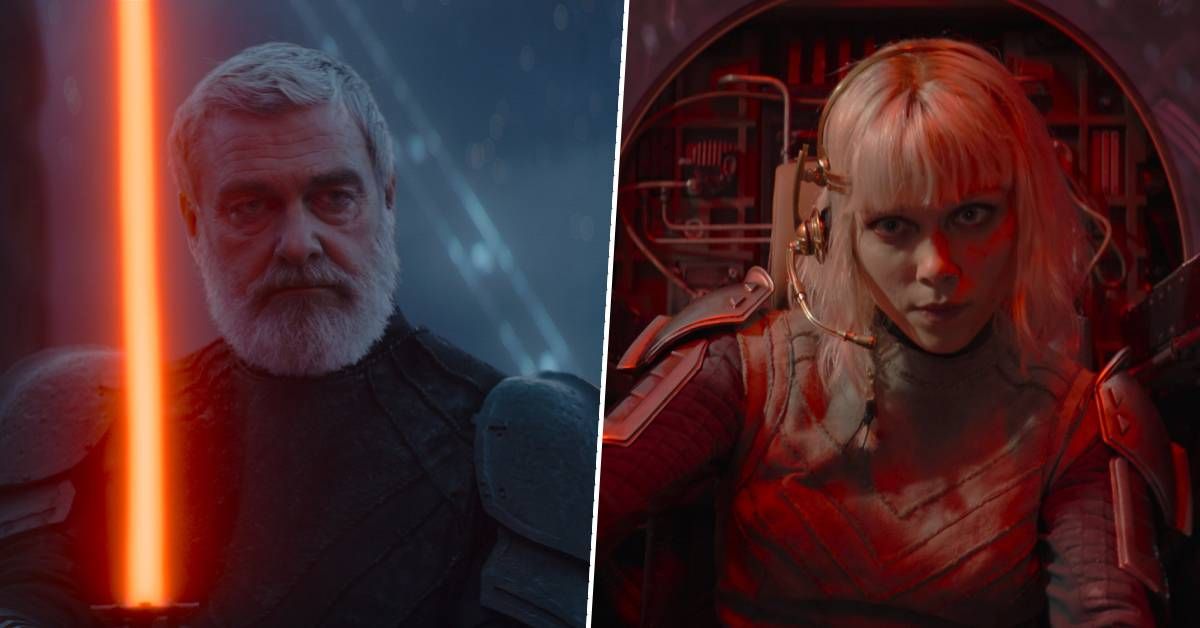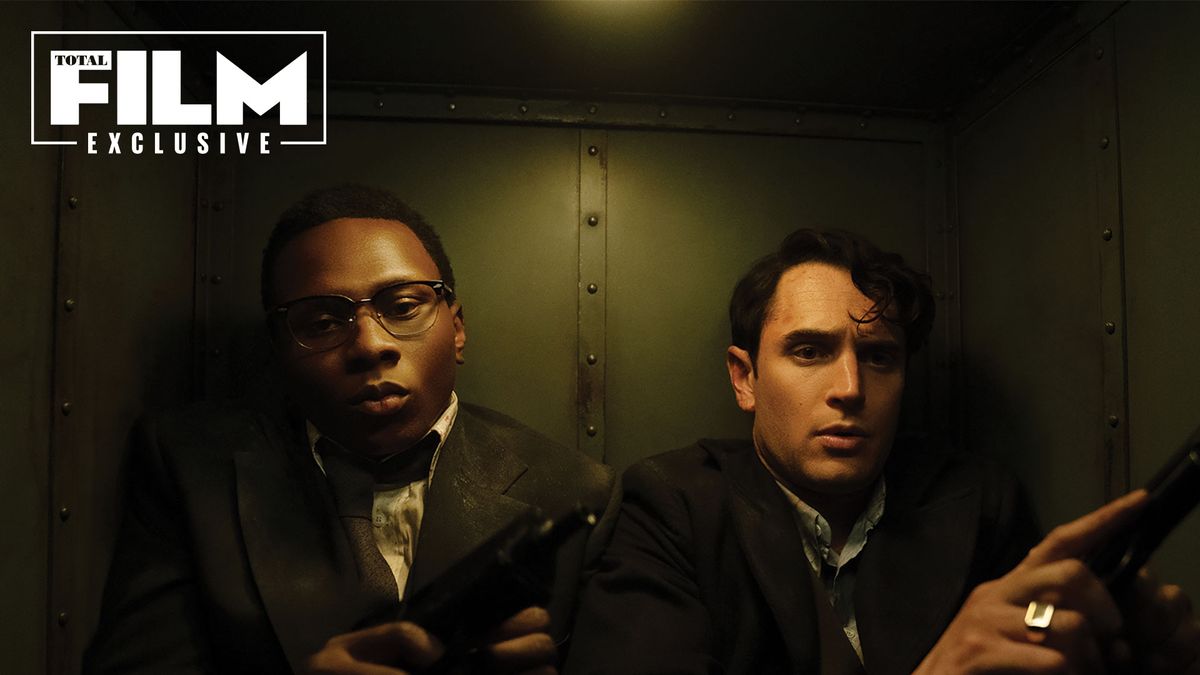Warning: This Star Trek: Picard season 2, episode 2 review contains major spoilers – many of them set to stun. Boldly go further at your own risk…
The Mirror Universe has been part of Star Trek lore ever since evil Spock donned a goatee in the original series. While Deep Space Nine, Enterprise and Discovery all had entertaining adventures in the parallel dimension, however, the Next Generation crew never got to experience life in the totalitarian Terran Empire on screen.
‘Penance’ goes some way to redressing the balance, with a smart, fun, action-packed instalment that contains pretty much everything you could want from a Star Trek episode – there’s even a talking cat.
First off, however, it’s important to note that – despite some familiar fascistic, xenophobic politics – this is not the Mirror Universe we’ve visited in previous Treks. Instead, this is an alternate timeline, created – much like the Kelvin continuity in JJ Abrams’ movies – by a history-altering event in the past. This pivotal moment is yet to be identified, but do we know it takes place in Los Angeles in 2024, and that it will set humanity on a path towards environmental catastrophe and the formation of a fascistic Confederation of Earth driven by an insatiable need to conquer every alien world in the galaxy. It’s also clear that travelling back in time to put things right is going to be Jean-Luc and co’s prime directive this season.
Arriving, confused and discombobulated, in this dystopia, Picard is forced to confront the monster he could have become had his circumstances been different. As Jean-Luc tries to argue that he’s incapable of his ruthless alter-ego’s atrocities, his old sparring partner, Q, presents compelling evidence to the contrary.
In this world, Picard could happily stand alongside Darth Vader, Ming the Merciless and Thanos in an interstellar legion of doom. This General Picard is a superstar for all the wrong reasons, the so-called “Borg-slayer” who aspires to “boldly conquer”, made his name on the bridge of the CSS World Razer (subtle…), and has a penchant for putting the skulls of his vanquished foes on display in the chateau – familiar Trek figures like Gul Dukat, General Martok and Spock’s dad, Sarek, have suffered this grisly fate. Even worse – in Picard’s eyes, at least – this doppelganger drinks black coffee, rather than the “tea, Earl Grey, hot” that’s traditionally his preference. “I don’t know who I am,” he tells his robot valet, Harvey, “but I’m not myself.”

In short, this human supremacist Picard skews about as far from our Jean-Luc’s utopian world-view as it’s possible to get. It’s remarkable, then, that being summoned to the palace for Eradication Day brings a glimmer of hope to the gloomy, polluted skies above Chateau Picard.
That’s because the president of the Confederation is one Annika Hansen, better known as Seven of Nine in the prime timeline. Like Picard, she’s aware that something is very, very wrong – here she rules the evil empire alongside her officious husband, the Magistrate – and quickly uses her executive powers to make contact with Rios, who finds himself fighting for the Confederation on the Vulcan front. Jurati, meanwhile, is studying an incarcerated Borg Queen, while Raffi is a hands-on head of security, hunting down Romulans – in a world where Romulans are slaves, freedom fighter Elnor is considered a dissident.
While none of the regular cast get to play their evil counterparts – denying Patrick Stewart the chance to wear an evil Spock-style goatee – the story relishes the chance to throw them into a world that’s both familiar and disconcertingly alien. This is sci-fi world-building at its best, as the teleplay efficiently establishes the ground rules of a dictatorship where the baying masses gather at hideous execution rallies. Yes, it’s extreme – a truly worst case scenario – but writers Michael Chabon, Akiva Goldsman, Terry Matalas and Christopher Monfette are careful to keep things plausible. Chilling real-world allegory is everywhere, and it’s really not much of a stretch to imagine how this world – the antithesis of Trek ideals – could emerge from our own troubled planet.
While you wouldn’t wish a holiday in the Confederation on anyone, it’s hard to think of a better group of people to experience it with than Picard and his crew. Although they were – by design – a disparate, dysfunctional bunch in season one, they’ve grown into a genuine unit, watching each other’s backs, while each bringing something unique to the party. Everyone gets a chance to shine here, whether it’s Elnor “improvising” to take down some Confederation security officers, or Jurati babbling a barely plausible backstory for her drinking exploits with Annika ‘Seven Shots’ Hansen. They’re fun to be with because they’re flawed and shouldn’t necessarily be in a room together. When they are, however, you feel they can accomplish anything – their escape from the Eradication Day ‘celebration’ is a Star Wars-y mix of best laid plans and desperate measures.

They also get to invite a new and potentially dangerous member to join their ensemble. Having prompted the initiation of the USS Stargazer’s self-destruct sequence last week, the Borg Queen finds herself a prisoner in this reality, her torso held captive in a stasis field as she awaits execution-by-(bad)-Picard. Even in this incapacitated, riddle-spouting state, she’s a powerful presence, totally aware of events back in the original reality. The Queen’s scared enough to make a deal with Picard to travel back in time – providing the computing skills required for the Star Trek 4 tribute act of a gravitational slingshot – but you’re never in any doubt she could turn on her new ‘friends’ if, and when, she gets the chance.
She’s not the only returning Trek antagonist, of course, and every one of Q’s scenes with Picard is a delight. No being in the universe can get under the former Enterprise captain’s skin quite like Q, and the Patrick Stewart/John de Lancie double act is pure box office. But Picard believes there’s something different about Q this time, a sense that the omnipotent superbeing is “not well.” You’re subsequently left wondering if the timeline hop is one of Q’s games – he assures Picard that he’s “not a [playing] piece, but the board on which the game is played” – or if other, even more sinister forces are at work.
Q’s name drops of vintage Trek episodes ‘Yesterday’s Enterprise’ and ‘In A Mirror Darkly’ also raise the intriguing question of whether he’s aware that the Federation’s adventures take place in a TV show in another reality. Or maybe they’re simply clever bits of fan service in a show that’s developing a knack for dropping in blatant references to Trek past, without feeling contrived – a reference to an unseen General Sisko feels entirely reasonable, while naming Jurati’s virtual talking cat (voiced by Patton Oswalt) Spot 73 is a neat nod to Data’s own Spot in The Next Generation.
Speaking of Data, Brent Spiner turns up in his seventh Star Trek role, playing a hologram of Adam Soong. How he fits in with the family tree of Data’s creator, Noonian Soong, remains to be seen, but his slogan that “a safe galaxy is a human galaxy” suggests he may have something to do with the origins of the Confederation. Could he be connected to the “watcher” Picard and co will be looking for in the 21st century?
The episode isn’t short of mysteries to play out over subsequent weeks – and there’s one hell of a cliffhanger, thanks to that interfering Magistrate – but more importantly, it happily stands alone as a near-perfect slice of Trek storytelling.
New episodes of Star Trek: Picard season 2 beam onto Paramount Plus (US) and Crave (Canada) on Thursdays. Viewers elsewhere can watch the show on Amazon Prime Video on Fridays. For more Trek action, check out our reviews of Star Trek: Discovery season 4.
The Verdict
5
5 out of 5
Star Trek: Picard season 2 episode 2 review: “A near-perfect slice of Trek storytelling”
With its chilling alternative universe, top-notch character interplay and non-stop sense of adventure, ‘Penance’ is modern Trek at its best. Two episodes in, Picard season 2 is making it so in style.
 Games News games, movies and TV you love.
Games News games, movies and TV you love.



